Drugs

reat Britain used drugs to enslave its subjects of the crown. The government failed. The Crown succeeded in snaring the people of China to the extent the opium den was thought to be their cultural tradition when, in fact, it never was. The process - supply and distribution - continues.

Space Horizon by Allison L. Williams Hill
Third Section: How We Influence Ourselves, By Our Habits, Chapter XIV – Drugs” - From The Hidden Side of Things by CW Leadbeater
The taking of opium or cocaine, though happily less common, is equally disastrous, for from the occult point of view it is entirely ruinous and fatal to progress. These drugs are sometimes a necessity in order to relieve great pain; but they should be taken as sparingly as possible, and on no account be allowed to degenerate into a habit. One who knows how to do it, however, can remove the evil effect of the opium from the astral and mental bodies after it has done its work upon the physical.
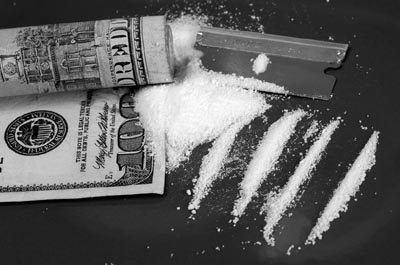
Nearly all drugs produce a deleterious effect upon the higher vehicles, and they are therefore to be avoided as much as possible. There are definite cases in which they are clearly required, when they are really specifics for certain diseases; but these are few, and in far the greater number of cases nature herself will work a rapid cure if the surroundings are pure and healthy.
With regard to the treatment of the body, prevention emphatically better than cure, and those who live rationally will rarely need the services of a doctor. Under all circumstances animal serums and products in any way connected
with or obtained by means of vivisection should be absolutely avoided. It should be remembered that tea and coffee contain as their essence drugs called respectively theanine and caffeine, which are poisonous, so that an excess of these beverages is a bad thing, especially for growing children; indeed, I incline to the opinion that, while in moderation they do no serious harm, those who find themselves able to avoid them are all the better for it.
Average Drug Detection Time in the System

Drug Descriptions
Alcohol- Beer, wine, or other alcoholic beverages, all have the same effect of depressing the central nervous system. This causes the bodily functions that are controlled by the brain to slow down. These include the ability to have good judgement, your reasoning skills, memory retention, slurring of speech, controlled muscle movements and your emotional stability. When alcohol intake is low, the drinker feels relaxed and less inhibited and is enjoying themselves. This state also puts the alcohol in control of decision making, causing less responsible actions on the part of the person drinking.
Amphetamines (AMP) are substances taken to boost energy, mood and confidence, as well as to suppress appetite(Amphetamine is a collective term given to amphetamines, dextroamphetamines and methamphetamines, all of which act similarly in the body. Out of these, methamphetamines are the strongest. (In the 1930s, they were used in nasal decongestants and to treat narcolepsy, ADHD and minimal brain dysfunction.)
Barbiturates (BAR) are central nervous system depressants. They are typically used as sedatives, hypnotics and anticonvulsants. The usual method of ingestion is by oral capsules or tablets. The symptoms seen when someone is taking these drugs looks like those of being intoxicated with alcohol. Chronic use of barbiturates will lead to physical dependence and higher levels of tolerance. There are short-acting barbiturates such as Secobarbital (Seconal)
which when taken for 2 to 3 months can produce physical dependence.
There are also long-acting barbiturates such as Phenobarbital (Nembutal and Luminal). Some other terms for barbiturates are: Amobabital (Amytal), Yellow Jackets, Reds, Blues, Amy's, and Rainbows.
Benzodiazepines (BZO) are sedative-hypnotics are Central Nervous System (CNS) depressants and are a category of drugs that slow normal brain function. There are numerous CNS depressants; most act on the brain by affecting the neurotransmitter gamma-aminobutyric acid (GABA). Neurotransmitters are brain chemicals that facilitate communication between brain cells. GABA works by decreasing brain activity. Although the different classes of CNS depressants work in unique ways, ultimately it is through their
ability to increase GABA activity that they produce a drowsy or calming effect that is beneficial to those suffering from anxiety or sleep disorders.

See if the In-Vesica 6 Month Integrated Health Program can work for you. Sign up for a FREE Health History!
Cannabinoids (THC) can be either a stimulant or a sedative depending on the strain used. It is either smoked or eaten and causes a feeling of being "high" for several hours after use. Several regularly observed physical effects are an increase in heart rate, bloodshot eyes, dry mouth, dry throat and increase in appetite. Use of this drug may decrease short-term memory and comprehension, alter the sense of time and reduce ability to perform certain tasks such as driving a car. This drug can also produce paranoia and psychosis. Some terms for this drug are: marijuana, weed, grass, pot, reefer, joint, roach, mary jane, maui wowie, loco weed.
Cocaine Metabolite (COC) has similar effects of alcohol. If taken in small amounts it can produce a calm state and relaxed muscles. Larger doses can cause a slurring of speech, staggered gait and an altered perception. Very large doses can cause a decrease in respirations, coma or death. When in combination, alcohol and depressants can multiply the effects of both which would increase risk. Some terms for this drug are: bump, coke, snow, candy, toot and flake C. It can be ingested by snorting, smoking, injection or oral consumption. The substance is a white crystalline powder usually mixed with other substances such as corn starch, powdered milk, sugars or flour.
Cotinine (NIC) Nicotine is a stimulant and sedative to the central nervous system. The substance is physically and psychologically addictive. When ingesting nicotine, there is an almost immediate result of the person feeling "happy" due to a discharge of epinephrine from the adrenal cortex. This is followed by stimulation of the central nervous system and other endocrine glands, which causes a quick release of glucose. After this stimulation, there is depression and fatigue which then compels the user to seek more nicotine to get back to the "happy" feeling. Over 50 million Americans smoke, which makes nicotine one of the most addictive substances in the United States.
In 1989 the Surgeon General issued a report stating that cigarettes and other forms of tobacco are addicting and that the substance which causes the addiction is nicotine.
Tobacco smoking will result in the absorption of nicotine via the lung and oral/nasal tissues. The nicotine is then metabolized into approximately 20 different metabolites and excreted in the urine. Continine is a major metabolite and accumulates in the body when smoking is a regular occurrence.
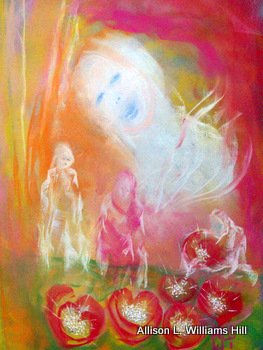
"...and the hearts became roses filled with diamond seeds." by Allison L. Williams Hill
Methadone (MTD) is used for treatment of moderate to severe pain and for opiate dependence of such drugs as heroin, Vicodin, Percocet and morphine. This drug is a narcotic analgesic and in most States a person must go to a pain clinic or methadone maintenance clinic for this prescription. This is a long-acting pain reliever which lasts from approximately 12 to 48 hours after ingestion. The withdrawal from methadone is more prolonged than that of heroin. Some other terms for methadone are: Amidone, burdock, dollies, jungle juice, junk, dolls, mud, phyamps, red rock, tootsie roll, fizzies, balloons, breaze, buzz bomb, and cartridges.
Methamphetamine (MAMP) is a stimulant and can cause an increase in heart and respiratory rates, along with elevated blood pressure, dilated pupils and decrease in appetite. Users may also experience sweating, headache, blurred vision, dizziness, sleeplessness and anxiety. Very high doses can cause rapid or irregular heartbeat, tremors, loss of coordination and physical collapse. When used in injection form there is a sudden increase in blood pressure that can result in stroke, very high fever or heart failure. Users of this drug report feeling restless, anxious and have mood swings. With increased doses comes increased effects. Users, over a long period of time, can develop an amphetamine psychosis which could include hallucinations, delusions and paranoia.

Opiates (OPI) are also stimulants and have similar effects as methamphetamine (ecstasy). Terms for this drug are: white stuff, miss emma, monkey, "M". The form is usually white crystals, hypodermic tablets or injectable solutions. ngestion can be either orally, smoked or through injection.
Oxycodone (OXY) is a Schedule II drug under the Controlled Substances Act because of its high propensity to cause dependence and abuse.
Phencyclidine (PCP) interrupts the functions of the neocortex, the part of the brain which controls intellect and instinct. The drug also blocks pain receptors which could cause violent PCP episodes resulting in self-inflicted injuries. PCP effects vary, but most frequently there is a sense of distance and estrangement. Time and body movements slow down and muscular coordination worsens along with the senses being dulled. Speech is blocked and incoherent. After chronic use there is paranoid and violent behavior along with hallucinations. Large doses of this drug could produce convulsions, coma, as well as heart and lung failure. This drug is a hallucinogen.
Tricyclic Antidepressants (TCA) are typically used for the treatment of depression type disorders. Overdoses can produce central nervous system depression and heart disorders. Tricyclic antidepressants are the most common cause of death from prescription drugs. These medications are taken orally and sometimes by injection. Some names for drugs which are tricyclic antidepressants are: amitriptyline (Elavil), desipramine (Norpramin), imipramine (Tofranil), nortriptyline (Pamelor) and protriptyline (Vivactil).
Drugs: How Drugs Work
Link to How Drugs Work
by Christina Dye July 2007 Cat. no. 223
Contents
1. Pastimes
2. Pinpoints
3. Processes
4. Actions
5. Effects
6. Changes
7. Postscripts
Connections: Resources
1. Pastimes
People have had drugs and alcohol on their minds for as long as drugs and alcohol have been around -- which is just about as long as people have been people.
It's one of the oldest pastimes on the planet, altering our thoughts and feelings and moods with whatever psychoactive substance is around -- and seems like a good idea at the time.It's also one of the most unpredictable pastimes on the planet, for the simple reason that drugs and alcohol produce their effects by temporarily tilting the biochemical balance inside our bodies and brains.Until recently, not much was really known about how, exactly, drugs and alcohol did their "tilting." But that's starting to change.Why? A main reason has been the explosion of drug-related scientific research that's taken place over the past two decades. It's caused a shift as radical, in its own way, as the drug revolution of the 1960's and '70s that preceded it.
It's
altered, in a fundamental way, our understanding of how psychoactive
chemicals affect our bodies and brains and, indeed, how our bodies and
brains work together to generate our perceptions and experience of our
lives.
That's why we've put together this booklet. In it, we'll examine the latest findings on how psychoactive chemicals are processed in the body. We'll focus on drug-related changes in body chemistry and examine how those changes alter mood and mental processes. And we'll review the short- and long-term health consequences of specific drug effects.Because the simple fact is that we've probably discovered more about the precise ways in which drugs affect the body in the past 10 years than in the 10,000 years before that. And what we've learned puts a whole new spin on our understanding of how drugs work and why human beings have always been attracted to chemicals that change the way we think and feel.
2. Pinpoints
Scientific revolutions often hinge on a single discovery or observation which, when viewed from inside a prevailing paradigm, cast so much doubt on its assumptions that earlier beliefs are simply swept away. Often, such discoveries meet with resistance -- especially when they run counter to accepted beliefs and religious orthodoxy, as was the case of Galileo's observation that the earth revolves around the sun.
Other times, a discovery fits so neatly into the evolving body of knowledge surrounding a discipline that it's accepted almost instantly as an obvious confirmation of what leading researchers have long suspected to be true.The current revolution in our understanding of drugs and the body began in 1975, with the latter type of discovery.It started in 1975 in the laboratories of two addiction researchers in Scotland, Hans Kosterlitz and John Hughes, who discovered simple amino-acid chains in a centrifuged extract taken from pigs' brains which, when applied to vas deferens tissues from mice, could block electrically-stimulated convulsions in the tissue -- just like morphine. The discovery confirmed what had been proposed by earlier researchers, that the brain manufactures its own "drugs" -- chemicals that relieve pain and control stress and trigger arousal and the countless other biological reactions that shape the precise ways that we think, act, and feel. They also discovered a system of specialized receptors in the brain, central nervous system, and other body systems that interact with these chemicals -- and with drugs and alcohol.

Pinpointing
receptors as the site of drug action is the psychopharmacological
equivalent of finding out the world isn't flat. It's reshaped our old
ideas about what causes drug addiction and redefined notions about how
to treat it.
It
may even offer answers to long-standing questions about the origins of
mental illness and behavioral problems -- from anxiety to anorexia
nervosa. And it lies at the heart of understanding the full range and
complexity of drug actions and effects. But before we can talk about specifics, we need to briefly review the basics of how all drugs work in the body.
Because
how quickly and well drugs "turn on" brain receptors depends on a
number of factors that come into play before they arrive at their
receptor sites.
And even though the ins and outs of drug processing are complicated, they're easily boiled down to four basic steps:
• Administration...or how drugs enter the body;
• Distribution...or how drugs move to the brain and other sites;
• Action...specific ways in which drugs produce their effects; and
• Removal...how the body stops drug actions and eliminates waste products.
In this chapter, we'll look at the first of these factors, administration. It's
an important place to start. Because sometimes, simple differences in
how a chemical gets into the body can make a big difference in the range
of effects it eventually produces.
Drug Administration
People have spent almost as much time thinking up ways to get drugs into the body as understanding what they do once they get there.That's because a drug's effects are determined in large part by the way it's administered. A simple rule of thumb is that the quicker a chemical enters the bloodstream, the more intense its effects. There are four main ways a drug can be administered: orally, or through injection, inhalation, or direct absorption through body tissues. Each carries its own biological costs and consequences.
Oral: Taking drugs orally is simple: All you have to do is swallow. But it's also the slowest way of producing effects since pills or capsules have to pass through more body systems before reaching the brain. Food and digestive enzymes also slow drug movement, and can weaken or block a chemical. That's why heroin is almost never taken orally; it loses almost 90 percent of its psychoactive punch in the stomach and liver, so that most of a dose is wasted.
Injection: The fastest way of getting a drug to the brain is by injecting it directly into the bloodstream. Intravenous injection ("mainlining") triggers effects almost before a user can pull out the needle. Chemicals can also be injected under the skin ("skin-popping") or shot into deep muscles (intramuscular injection). Since drugs must move through more layers of body tissue with these methods, onset of effects is delayed by about 15-30 minutes.

Inhalation: Drugs that are smoked or inhaled move across air sacs in the lungs before being absorbed into the bloodstream.How
quickly they reach the brain depends on the size of the individual drug
molecule. Volatile gases, like ether, produce effects almost
immediately, while marijuana and other drugs that are inhaled as
particles in smoke go to work less quickly.
Direct Absorption: Drugs
can also be absorbed directly across body tissue. Examples include
cocaine (which, when sniffed, is absorbed through nasal membranes) and
smokeless tobacco, in which nicotine is absorbed through cells lining
the cheek and gums. Since
all routes of drug administration allow foreign substances to pass
directly into the body, side effects are unavoidable. Problems can range
from simple nausea to nervous system damage and lung cancer.
Other risks are tied to other factors, such as injection-linked infections, abscesses, and tissue damage. IV drug users also face sharply higher risks for contracting and spreading the HIV virus that causes AIDS by sharing contaminated needles and syringes. Still, despite their differences, all routes of administration have one thing in common: They get drugs inside the body and on their way to the brain. But before psychoactive chemicals can do any psycho-activating at all, they must first hook up with an internal body transport system to carry them to the brain. But that's another story -- or, at least, another chapter.

3. Processes
Once a drug gets inside the body, lots of things start happening all at once. For starters, as the chemical moves into the bloodstream, it circulates to body organs and tissues. Then, after linking up with receptor cells in the brain and other body sites, it eventually migrates to the liver, which breaks it down and flushes it away. Sound simple enough? Maybe -- from a distance. But up close, things get a little more complicated. That's why we're now going to look at the processes the body goes through after a chemical is administered, but before it triggers its main psychoactive effects. In the section that follows, we hope to get you close enough to the action to give you an idea of the complexity of drug actions and effects, while keeping enough distance from the process that things keep sounding simple.
Solubility
In the body, drugs are absorbed into cells and tissues the way water soaks across a sponge. They spread from areas of high concentration to low concentration, passing through millions of cell membranes along the way. If all drugs were absorbed at the same rate, their effects would begin at about the same time. But they aren't and they don't. That's because drug molecules differ in solubility, or how they dissolve in body tissue. Everyone who's ever spent time at a salad bar knows that oil and water don't mix. That's why the oil in Italian dressing always eventually rises to the top, no matter how long you stir -- or how hard you shake it. Drug molecules work in much the same way. Some mix more easily with oil (body fats), others with water. And since most cell membranes contain high levels of fats, drugs that mix with fat can penetrate them quickly. Larger water-soluble drugs have a harder time of it, though. They can bead on the cell surface, or pass slowly through tiny pores in the membrane. Fat solubility plays a key role in how quickly a drug reaches the bloodstream -- and how soon after it gets to the brain. All mood-altering drugs dissolve in fat -- some just do it faster than others.
Distribution
Drugs are carried to their sites of action through the bloodstream. The process is a fast one: The heart recycles the total blood supply in about a minute, pumping drug molecules to all parts of the body. The brain gets the largest share of that supply -- about 16 percent of all circulating blood. That means that all drugs (and other substances found in blood) are carried to the brain. But not all can enter it.That's because the brain is surrounded by a wall of veins and capillaries, known as the blood-brain barrier, which protects brain tissues from impurities that are carried in blood. It's practically leak proof: Unlike most other cells, it has no pores. Only oxygen, food, and fat-soluble chemicals can filter across. All psychoactive drugs pass the barrier, or they wouldn't be psychoactive. Other drugs -- penicillin, for example -- can't and don't. Once drug molecules make it across the blood-brain barrier, they move to receptor sites throughout the body. How long they stay there -- and how long they keep on producing effects -- depends on how quickly the drug is broken down and removed in a process called metabolism.
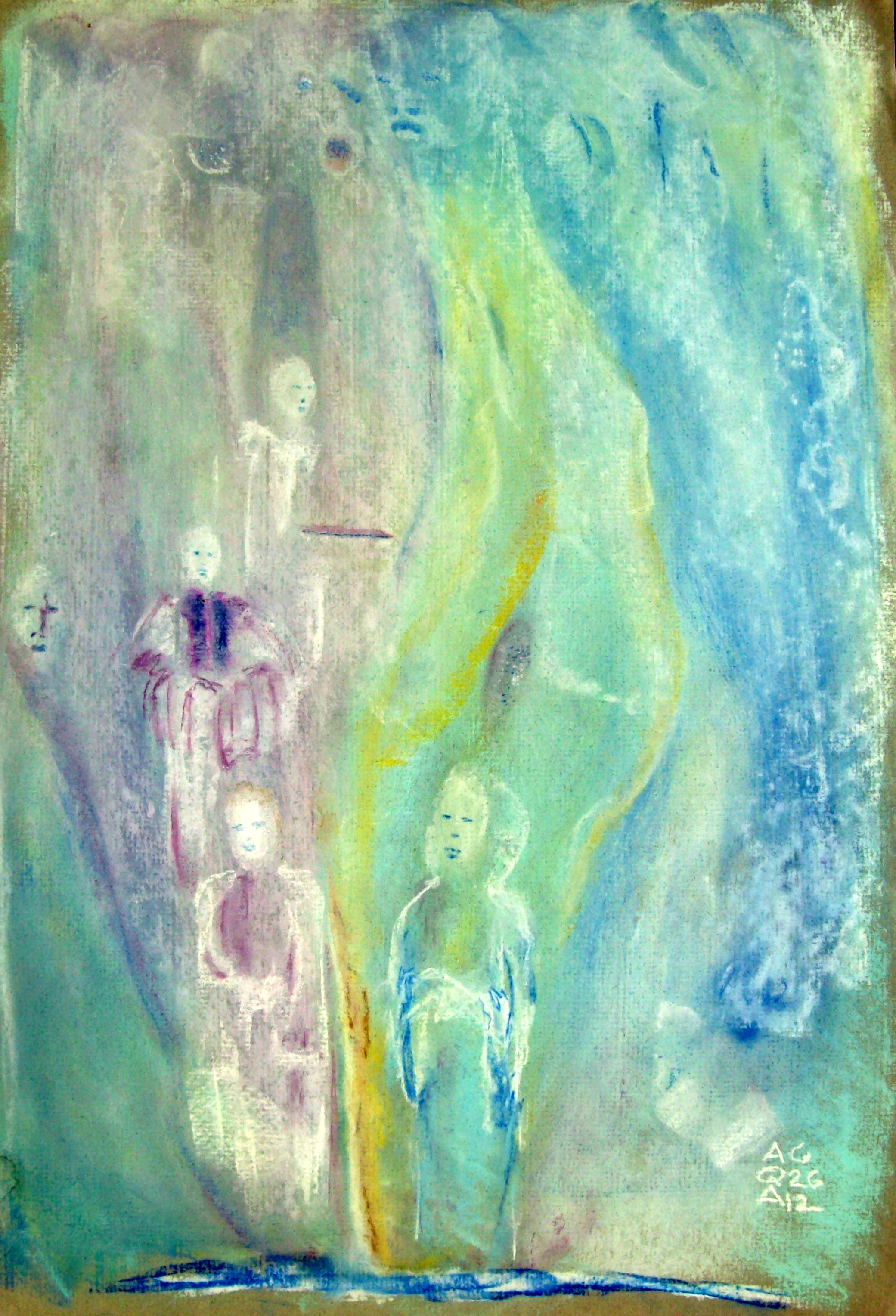
Metabolism
Drugs are removed from the body just like milk, pizza, hot dogs, and Mom's apple pie. The liver breaks big molecules into simpler parts that can be mixed with water and flushed away. It's a simple input-output process. But in other ways, drug molecules aren't like apple pie, at all -- at least not any apple pie we've ever heard of. For one thing, they're more complex -- and harder to break down. Some drugs are so complex that they have to pass through the liver several times before they're eliminated from the body. That's why peak drug effects can last a long time; they begin to fade only when a chemical is broken down faster than it's absorbed.
The process of breaking drugs down is called drug metabolism. Breakdown products are known as metabolites. Metabolism mostly takes place in the liver, where enzymes snap drug molecules apart like tinker toys. Metabolism also occurs in the kidneys, gut, lungs, and blood, but on a smaller scale. Drug metabolism is easily the most detailed step in drug processing, since a single drug can produce dozens of metabolites, some of which may also trigger psychoactive effects.
THC,
the main mind-altering chemical in marijuana, has at least 25
metabolites, and it can take up to five days before all of them leave
the body -- even longer in the case of heavy smokers.
Alcohol is a much simpler chemical that's broken down and removed quickly -- usually in less than 24 hours. High-fat areas of the body, such as the brain, are lightning rods for THC and other fat-soluble drugs. These chemicals are stored in fatty organs and cells, and only slowly inch back into the bloodstream for removal. This buildup explains why certain highly fat-soluble drugs -- like barbiturates, tranquilizers, marijuana, and others -- may produce lingering effects hours or days after use. Drugs that are more water-soluble are different. Heroin is a good example. It isn't stored in the body. In fact, it's broken down so quickly that users must readminister the drug every 4-5 hours to maintain a high.

Remember this? The Olympian Phelps with a bong? His mother and spin doctors scuffled to hope the world forgot this. Why should we? Image is everything where money is concerned.
Removal
Drug highs fade as chemicals are converted into simpler particles by the liver. From there, the action switches to the kidneys, which remove metabolites and any wastes in the bloodstream, and pass everything on to the bladder.Drugs are also removed in the large intestine and in sweat, saliva, and milk from breast-feeding mothers. Since some alcohol is removed in the process of breathing, Breathalyzer tests are able to directly measure blood alcohol levels -- and intoxication.
As we have seen, each step in the biological transformation of drug processing is a story all its own, involving countless chemical actions and reactions that we can't begin to cover in detail here. What we have tried to do is outline the basic points and processes of drug movement through the body.And there's a good reason for that. Because even though drugs and alcohol only produce their psychoactive effects in the brain, those effects are shaped by other processes in other parts of the body. And, as we'll soon discover, the changes that drugs and alcohol trigger there are no less important than their effects on the brain.
4. Actions
We've known for a long time that drugs and alcohol change the way we think and feel. But until just a few years ago, we didn't get very specific about it.
We just sort of supposed that they changed something in the body to create those effects. But in 1975, when researchers stumbled across receptors in the brain that trigger drug effects, we began to learn just what that something was.
And things have never been the same since. We now know that drugs and alcohol produce their effects by altering normal chemical processes in the brain. We also have a better understanding of how and where those changes happen. And that understanding has unleashed an avalanche of new research into how the brain works and what goes wrong when it doesn't. That's what this chapter is all about. We won't even attempt to trace all the twists and turns of brain chemistry. That's as difficult (and as time-consuming) as counting grains of sand on a beach or freckles on a redhead. What we will do, though, is review the basics of how the brain works and examine how drugs and alcohol affect those processes. Because psychoactive chemicals do alter the way our brains work. The degree of change depends on the drug, its potency, and how it's processed by the body. But the type of change is a function of how a drug reacts at specific sites of action in the brain.
Brain Basics
Once a chemical passes through the blood-brain barrier, it begins to encounter neurons, the nerve cells that form the communications pathways of the brain and nervous system. Nerve cells monitor changes in the body and send information about those changes to other nerve cells and to response centers in the brain. It's this constant flow of electrochemical impulses that determines how we think, act, and feel from moment to moment. Drugs and alcohol are an abnormal source of change in this system. They alter normal operations and change the flow of normal cell-to-cell communications. And they do that by interacting with a specialized part of the nerve cell membrane called the receptor.
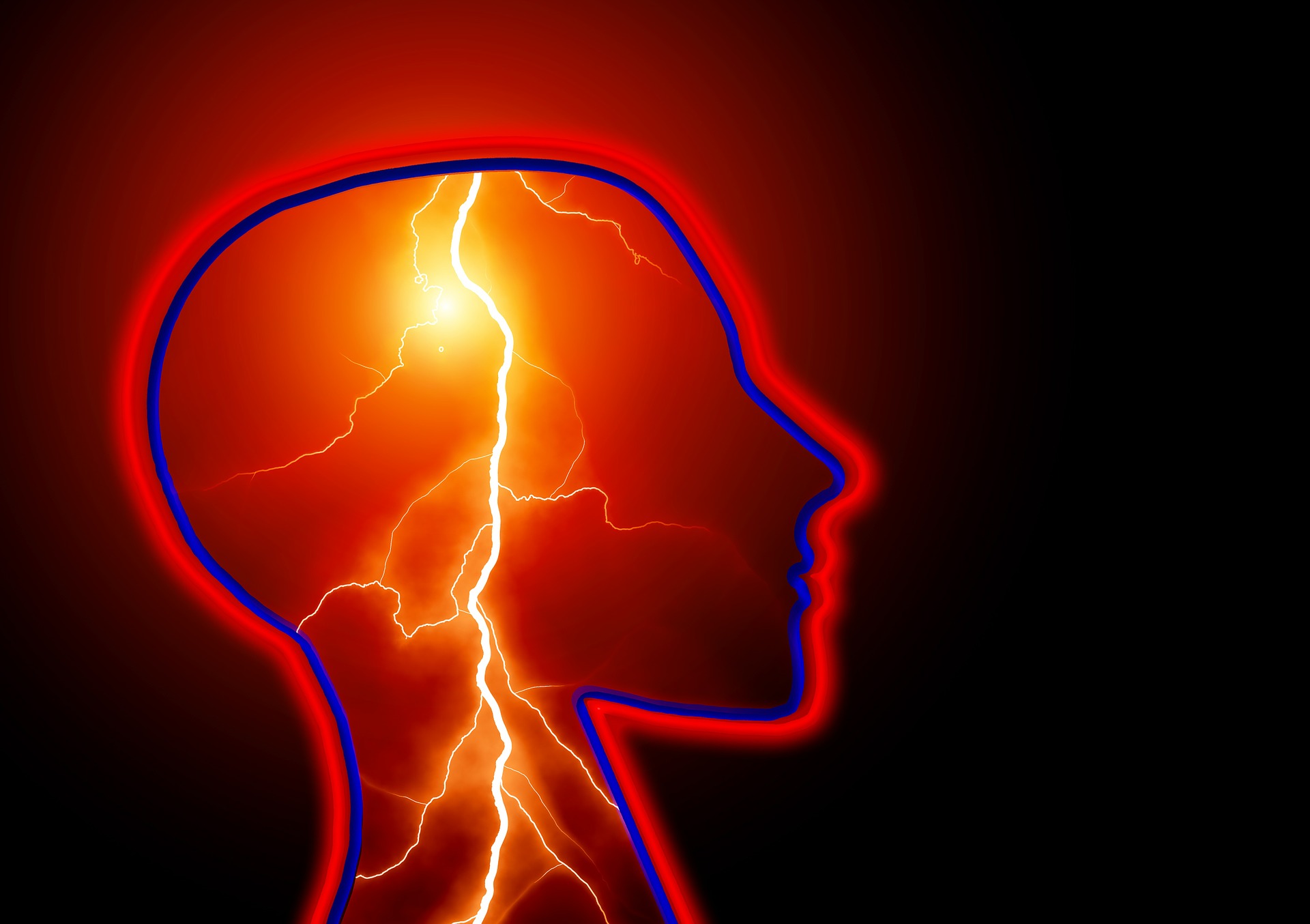
Brain Drugs
Neurons communicate by sending and receiving electrochemical messages.These signals travel as a wave of electrical current down the cell body of the neuron and as chemical transmitters (called neurotransmitters) that are fired across the synapse, or the gap separating one neuron from another.
Receptors in adjacent nerve cells are activated by the transmitter, which generates a fresh electrical signal that triggers a new burst of neurotransmitters to neighboring neurons. The whole process happens in a flash, and sets off thousands or millions of similar reactions along the way.
Receptor sites are highly specialized. They respond only to particular sets of messages carried by specific types of neurotransmitters. It's these chemical messengers, tiny pellets of neurotransmitter that jump the synapse, that form the basis of everything we think and feel. We could easily spend the rest of this booklet discussing neurotransmitters. Because increasingly, research is showing that they're more than simple messengers. In a real way, they are the message -- of consciousness itself -- conveyed through a built-in system of stress-reducers and pain-relievers that acts as the body's own medicine cabinet.
Where do drugs and alcohol fit in?
They change the way neurotransmitters interact with receptors. How? In lots of ways. For starters, drug molecules plug into brain receptors like keys slipping into locks. There, they can turn up or turn down a neural signal -- or even turn a signal on or off altogether. Then again, they can change a cell's receptivity to other signals. The exact change seems to depend on the drug.
Alcohol, for example, alters the sensitivity of the entire cell membrane, while heroin occupies receptor sites involved in the body's own internal pain-relief system. Pain is still felt, but the drug blocks the cell's response to it. Other drugs work in similar ways -- which might not be all that bad, if that's all that drugs did.
The problem is that it isn't.
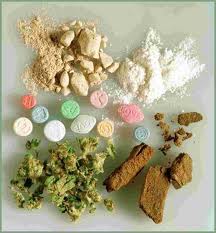
5. Effects
So why do people choose to voluntarily rewire their own neurocircuitry with drugs and alcohol? There are a lot of different reasons, and you know most of them already. Either they feel anxious or insecure or they can't sleep or eat or else they eat or sleep too much. In fact, there are almost as many reasons for taking drugs as there are people who take them. But the main reason that drugs and alcohol have held their fascination for quite so long is that psychoactive chemicals cause physical and emotional changes that people see as desirable, in one way or another. On an objective level, main effects center on actions taking place at receptors in the brain and central nervous system. Side effects can involve actions at other sites in the body. But on a subjective level, effects are experienced in the mind, either as a pleasurable way to pass time or as an indispensable aid to happiness and well-being. In addition to the factors we've talked about thus far, the total range of a drug's effects are shaped by other elements, including drug purity, potency, and toxicity, and by the way those factors "fit" personality traits of the user. And that brings us to what we'll look into next -- the short-term effects of specific drugs and alcohol. Because psychoactive chemicals can trigger a world of change. Otherwise, no one would be interested. And almost everyone seems to be, in one way or another.

Let's start with alcohol. Everyone else does, often enough. Alcohol can take a number of forms -- beer, wine, or liquor. We'll lump all the types together, though, because from a pharmacological standpoint, each is just a medium for ethanol, the psychoactive ingredient in all alcoholic beverages.
In the body, alcohol is mostly absorbed from the stomach and intestines and quickly moves into the bloodstream. Unlike other drugs, alcohol dissolves in both water and fat, and it's distributed evenly throughout the body. Since it's broken down in the liver at a steady rate of about a third of an ounce of pure ethanol per hour (the approximate amount of alcohol found in an ounce of 80-proof whiskey or a single beer or glass of wine), most people can consume a drink or so in an hour with few effects. Greater consumption causes a backlog of alcohol in the body that eventually results in intoxication. Drinking much more very quickly can cause overdose, even death. In the brain, alcohol produces general depression by lowering the sensitivity of brain cells. Low-dose effects include feelings of relaxation and disinhibition, related to slowed activity in the brain's behavioral control centers. Alcohol also slows breathing centers in the brain, and can impair memory, judgment, and coordination.
Depressants
Alcohol's effects are much like the effects of other central nervous system depressants, including barbiturates (Seconal®, Nembutal®) and non-barbiturate sedative-hypnotics (Placidyl®, Doriden®) and the "minor" tranquilizers (Valium®, Librium®, and Tranxene®).
Depressants are absorbed at varying rates in the stomach and intestines. The onset of action varies by drug, but all are broken down slowly so that effects can linger hours or days after use.
Depressants cut the intensity of nerve signals to higher brain centers. Like alcohol, they trigger general CNS depression, relieving anxiety and, ultimately, inducing sleep. Barbiturates and other sedative-hypnotics can suppress breathing: Overdose deaths can occur at doses as little as three times the therapeutic dose.The exact mechanism by which depressants exert their effects is vaguely understood, although the drugs are thought to boost activity of the anti-anxiety transmitter gamma-aminobutyric acid (GABA), which inhibits the neuronal firing of excitatory impulses.
Hallucinogens
A number of hallucinogenic drugs are widely used today, including LSD, mescaline (peyote), psilocybin ("magic mushrooms"), PCP or phencyclidine ("angel dust"), ketamine ("Special K"), and MDA and MDMA ("ecstasy").
Most are absorbed quickly and spread to all parts of the body, producing effects within an hour.
The full range of actions triggered by hallucinogenic drugs is still unknown, but the drugs seem to overload thought, perception, and arousal centers by altering activity in various brain structures through their direct action on neurotransmitter systems.
LSD is believed to alter the release and biological activity of the neurotransmitter serotonin, and other neurotransmitters, including dopamine and norepinephrine. Very little LSD ever reaches the brain, but due to its extreme potency, psychoactive effects set in at brain levels of just a few millionths of a gram.
The amphetamine-based drugs, MDA and MDMA, act on norepinephrine receptors which often figure into the body's fight-or-flight system, triggering agitation and hyperarousal.
Phencyclidine and ketamine produce their dissociative anesthetic and hallucinatory effects by acting directly on a specialized system of postsynaptic receptors for the excitatory neurotransmitter glutamate.
Inhalants
There are several basic types of inhalants: solvents (glue, typewriter correction fluid, gasoline), aerosols (spray paint and cooking spray), amyl and butyl nitrite (and newer, act-alike variations, including cyclohexyl nitrite), and nitrous oxide.After inhalation, drug molecules rush immediately to the brain, triggering sudden, fast-fading effects. Amyl and butyl nitrite produce sudden dilation of veins to the heart. Nitrous oxide is one of the few drugs which exit the body unchanged in breath.
Most inhalants act as depressants with mild hallucinogenic properties by slowing nerve signals and suppressing arousal centers in the brain.Amyl and butyl nitrite relax smooth muscles and blood vessels, producing rapid heartbeat and a fast drop in blood pressure. Although their exact mode of action is still unknown, their main effects may result from reduced blood flow to the inner brain.
Marijuana
Drug molecules in marijuana move quickly from the lungs to the bloodstream and are absorbed within minutes. Because pot isn't a single chemical (It's composed of some 420 different chemicals, 62 of which -- known as cannabinoids -- occur nowhere else in nature), metabolism is slow and involves dozens of by-products that are stored in fatty tissues, including the brain. Traces of pot's main psychoactive ingredient, tetrahydrocannabinol (THC), and other metabolites can be detected in urine for 5 days after smoking, for weeks in heavy users. THC easily passes through the brain barrier, producing both selective stimulation and depression of thought, memory, and perceptions. The exact mechanism by which marijuana triggers its effects still isn't altogether clear, although we have recently learned that the drug interacts with a distinct set of cannabinoid receptors, known as anandamides.
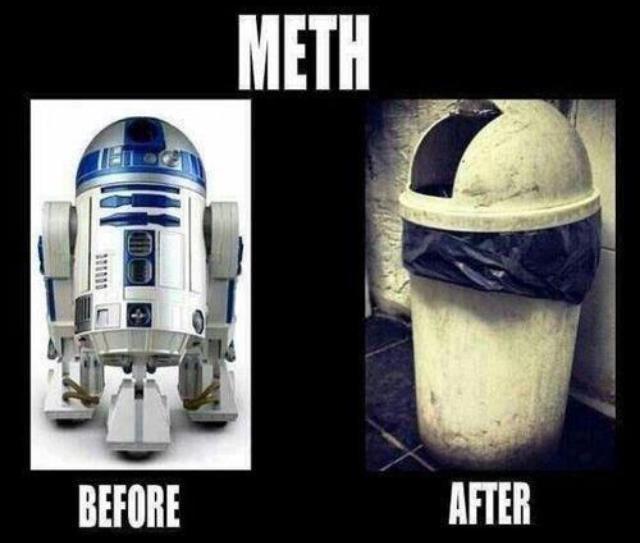
Narcotics
Narcotics fall into two classes, opiates (heroin, morphine, and codeine), and synthetics (Demerol®, Percodan®, Talwin®, and Darvon®). Opiates are poorly absorbed in the stomach, but produce almost immediate effects when injected or inhaled. Drug effects usually peak within an hour. The drugs are broken down quickly in the liver, and are rapidly eliminated from the body. In the brain, narcotics relieve pain and increase sleepiness by replacing internal pain relievers (called endorphins) at their receptor sites. Heroin and morphine also depress brain centers for breathing and heart rate. The drugs can also cause nausea, vomiting, and itching.
Stimulants
Stimulants rank alongside alcohol at the top of the humanity's list of all-time pharmacological favorites. Examples include cocaine (including freebase and "crack"), amphetamines (Dexedrine®, Benzedrine®), methamphetamine ("crystal," "crank"), nicotine, and caffeine. In the body, amphetamine effects generally start within an hour when swallowed, almost instantly when injected, and can last 6-8 hours or longer. Cocaine acts for a briefer period (less than an hour), since the drug is metabolized within 15 minutes. Freebase or "crack" is the fastest-acting and shortest in duration: It speeds to the brain within seconds, and fades in minutes. In the brain, stimulants increase the supply and action of neurotransmitters involved in arousal (particularly norepinephrine and dopamine), producing a sharp rise in energy levels and sharp drops in appetite and fatigue. The drugs also act directly on heart muscles, triggering irregular heartbeat. Caffeine and nicotine produce a more general brain cell stimulation, while nicotine acts on receptors for acetylcholine. High blood levels of stimulants can trigger psychotic states.
6. Changes
By now, you might have guessed that since drugs so powerfully alter the way the brain works, chemicals eventually create lasting changes. And if you did, you'd be right.Drugs and alcohol can trigger long-lasting side effects. Some are reversible, fading away in the months and years after drug use is stopped. Others, particularly tissue damage caused by constant exposure to chemicals, don't go away quite so easily. In this section we'll discuss some of the more common drug-induced changes, including tolerance, physical and psychological dependence, and health hazards linked to long-term drug use.They're worth serious attention. Because when it comes to drug abuse, sometimes even when you think you're getting away with it, you're still not getting away with it.
Tolerance
If you lived next to railroad tracks, sooner or later you'd stop waking up at night when the 2 a.m. coal train rumbled by. It's a process of gradual habituation, and it's a good thing. In fact, if we couldn't filter out irrelevant sights and sounds and other stimuli of everyday life, we'd have a hard time ever making sense of anything, buried in an avalanche of sensation.
Drug tolerance works in much the same way. When nerve cells are exposed to regular doses of a chemical, they gradually adjust to it being around. That's why, over time, repeated doses of a drug tend to produce less powerful effects.
Nerve cells may develop tolerance by creating "filters" for drug effects, just as we become able to block out distracting sounds. Researchers think such filters may involve physical changes to nerve cells that allow them to operate "normally," even when the drug is present.
Degree and rate of tolerance varies with the drug. LSD produces a short-term form of tolerance in just a few days, while marijuana and alcohol require months of regular use.
Not only that, but the body may only become tolerant to certain drug effects -- to the sleep-inducing properties of barbiturates, for example, but not to the drugs' respiratory-depressant effects. Or it may become tolerant to other drugs in the same class (as is the case with depressant drug "cross-tolerance"), whether or not it's been exposed to specific drugs in the family before.
But no matter what specific form tolerance takes, it means that users must take larger doses of a drug to achieve desired effects. And that can lead to dependence.
And that can lead to trouble.

Dependence
People have suffered problems of drug dependence for centuries. But the process is still poorly understood. Simply stated, a person who is chemically-dependent needs regular doses of the chemical in order to function normally. When the chemical is removed, the person experiences a syndrome known as withdrawal. The withdrawal syndrome can continue long after the drug has left the body. It can include largely physical symptoms, such as nausea, fever, and chills, or psychological problems, including anxiety, irritability, and insomnia.
What causes things to go so awry?
Since the discovery of drug receptors, researchers increasingly view dependence as an imbalance of brain chemistry. They suspect that the brain and central nervous system adapt to some drugs by changing the "rules" by which transmitters are made and fired. Other chemicals, such as alcohol, seem to produce structural changes in nerve cells themselves. That's why an increasing part of addiction research has begun to focus on ways for helping the brain recover its own chemical balance, through diet, exercise, meditation, or other therapies (such as the use of antidepressant drugs) designed to bring brain chemistry back into balance. It can be a tricky proposition. And for some, it's easier said than done.
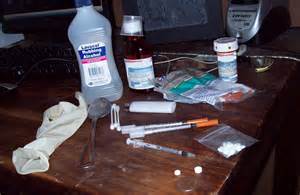
Long-Term Health Effects
Continuous drug use produces lasting changes in the body. The range of possible effects and side effects on organs and body systems is immense -- so vast, in fact, that we're not even going to try to cover them all here. Still, we will point out that most long-range biological effects seem directly linked to where a chemical spends its time -- how it's processed and where it acts in the body. It shouldn't be surprising that tobacco damages the lungs and heart and is linked to cancers of the mouth, throat, and lungs. That's the route nicotine and all the other chemicals in tobacco take in entering the body.[Recently advertised is the power of smoking in robbing the body of oxygen. The effects of smoking are more far-reaching than ever told, so much so, that other organs beyond the most obvious may become damaged.-ALWH]
Alcohol provides another clear example. In addition to its action on brain cells, alcohol speeds up formation of fats in the liver. In heavy, long-term drinkers, these fatty deposits lead to cirrhosis, a scarring of liver tissues that eventually stops the liver from normal functioning.

And a similar fat buildup in arteries leading to the heart is now tied to heart disease and hardening of the arteries. Heroin, for all its sinister reputation, seems to produce little direct tissue damage. Because of its solubility, it's absorbed and removed quickly. In fact, heroin's main side effect (aside from physical dependence) is chronic constipation. That's because it engages receptors in the digestive system as well as the brain, slowing movement of food through the stomach and intestines.
Drugs of all types also produce a range of indirect health effects.
Some
-- particularly alcohol and depressants -- reduce overall vitality by
interfering with the natural sleep process. Others -- including
marijuana and amyl and butyl nitrite -- may impair immune response. There's a point and a problem in all of this.The
point is that drugs and alcohol can powerfully alter the way our bodies
work -- sometimes even years after we stop taking them.
The problem is that we may not notice all -- or even most -- of these changes until long after the fact. And by then, the damage is often done.
7. Drugs Postscripts
We've come a long way in piecing together how drugs and alcohol work in the body. We've learned how they're absorbed into body tissue and how they're removed. We've reviewed sites in the body where drugs link up with internal systems to produce their effects. And we've traced those actions to changes in body chemistry and their corresponding effects on health and behavior. We've covered a lot of ground in a very little time, as impartially as we could. But in spite of our own best efforts (and the best efforts of human beings for the past few thousand years) we still haven't found a drug that's harmless, biologically.
Why not?
Simply because there doesn't seem to be any. That's because all psychoactive drugs produce their effects, to a greater or less degree, by interfering with the way the body produces those same effects for itself.
That means that the best hope we can offer to the wishful thinkers out there who are still looking for the "perfect drug" is to say that several drugs -- including caffeine and alcohol -- seem relatively harmless, when used in moderation, by most people. But that's as close as any responsible person can ever get to endorsing psychoactive chemicals.
That's because, in discussing drugs and the body, it eventually becomes necessary to point out that all bodies -- and all brains -- are not alike. Some people tolerate caffeine well. Others go right up the wall after a single cup of mocha latté. Some people seem to be able to drink regularly without major physical or behavioral impairment. Others seem to be born drunks.

Where do you fit in the continuum? Only you -- and your body -- can say.
Because
what we know about drugs and their effects to date basically centers
around the ways in which our bodies are alike. The problem is that we're
all different. And drugs and alcohol do their most serious work by
plugging into the most "different" parts of us all. That's
because psychoactive chemicals move, like magnets to steel, to the
places inside us where thoughts and perceptions and feelings are born,
live, and eventually die. Perhaps most worrisome of all, they tilt these intimate aspects of ourselves from the inside out. From
the outside in, though -- from the perspective of the altered
self-concept and thoughts and feelings that result -- it's easy to
overlook the fact that we're doing it to ourselves. And from there, it's
a small step to forgetting who's in charge of our lives altogether.
Want to avoid problems for yourself?
The safest way is to be careful with the drugs you allow into your life. Because
one bit of information that human beings picked up over the centuries
that's as true in the era of science as it was in the era of
superstition is that alcohol and drugs can change us -- in ways both large and small.And the surest way to prevent problems is to avoid them altogether.
Connections: Resources
The current explosion of research into drug actions and effects -- and the expansion of awareness it has provided into basic processes of human consciousness -- is one of the most remarkable stories of our time. Developments are coming in so quickly that it's impossible for any single edition of a single publication -- especially one as brief as this one -- to provide much more than a snapshot of the understanding of the present moment.
For more information -- and an in-depth analysis of topics covered in Drugs & the Body, we recommend consulting the most recent edition of any of the following works, which are invaluable guides to basic and advanced principles of psychopharmacology.
A Primer of Drug Action. Robert M. Julien, M.D., Ph.D., W.H. Freeman, 1995.
Drugs and the Brain. Solomon H. Snyder, M.D., Scientific American Library, 1996.
Mind Matters: How the Mind and Brain Interact to Create Our Conscious Lives. Michael S. Gazzaniga, Ph.D., Houghton-Mifflin, 1988.
The Biochemical Basis of Neuropharmacology. Jack R. Cooper, Ph.D., Floyd E. Bloom, M.D., and Robert H. Roth, Ph.D., Oxford University Press, 1991.
For more information on the neurological basis of drug actions and effects, please visit our web site at http://www.doitnow.org/pages/brain.html.
Click here for In-Vesica Services
Links

The above meditation mandala will be available soon.













